2023 marks 50 years since the end of Australia’s involvement in the Vietnam War. The conflict raged from 1 November 1955 until the fall of Saigon on 30 April 1975. During that time, more than 60,000 Australians served, more than 3,000 were wounded, and 523 were killed during Australia’s involvement.
This was Australia’s longest involvement in a war during the 20th century and this year, on Vietnam Veterans’ Day – Friday 18 August – a national commemorative service will be held at the Australian Vietnam Forces National Memorial on Anzac Parade in Canberra.
The calendar of events leading up to the service has included events and initiatives to raise awareness of the service of Vietnam veterans, and honour the sacrifices made by their families during this time.
For history teachers keen to enhance their understanding of the conflict, as well as recognise Australia’s Vietnam veterans in their own way, The Bursar has curated the following recommence reads for Vietnam Veterans’ Day.
Australia’s Vietnam: Myth vs History
Journalist and historian Mark Dapin continues the work of Jerry Lembcke’s 1998 book The Spitting Image. In that book, the author’s extensive research confirmed his belief that the accepted memory of veterans being shunned when they returned from Vietnam was largely a fabrication. One that spread like wildfire through movies and popular culture – with no real basis in truth.
In Australia’s Vietnam: Myth vs history Mr Dapin sets out to dispel the myths around returning veterans and how they were welcomed back unto the country. His mission: to record the facts of Australia’s true experience of the Vietnam war.
For example, he questions the myth that Australia’s Vietnam veterans arrived home in the dead of night to avoid angry protesters and his research uncovers that flight times were dictated by Qantas needing their planes during the day for commercial flights.
While the author isn’t insisting that there were zero protests and every incident was fake, he is certain that they took place much less than is frequently reported. It makes for a fascinating read in the context of our present-day need for critical thinking, fact-checking, and trustworthy news sources.
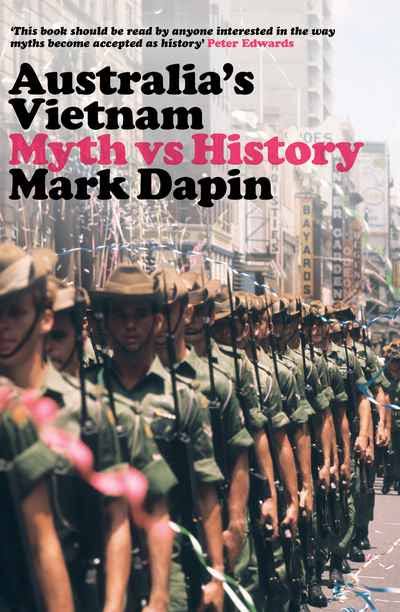
The Long Shadow: Australia’s Vietnam Veterans Since the War
Peter Yule’s The Long Shadow: Australia’s Vietnam Veterans Since the War is an independent study of the long-term health issues stemming from the war. It was commissioned by the Australian War Memorial Council and essentially reshaped public perception of the true impact of the Vietnam War.
Studies have been conducted in the past but they didn’t delve into veterans’ loved experiences in the same way as Mr Yule’s in-depth study. This is a 672-page review of hundreds of interviews, written pieces, and spoken word accounts, taken from veterans of all demographics, their family members, medical professionals, politicians, the military, activists, and the organisations advocating for veteran welfare.
It’s the largest pool of voices to contribute to a study like this, presenting a more rounded view of the bigger picture and further cementing the independent nature of the study.
The author also explores the impact – and power – of family, and the part that partners play in veterans’ recovery and quality of life post-war. Agent Orange also features as he unpacks the long term psychological effects of military use of the toxic herbicide, and of the subsequent denial of the damage its carcinogenic ingredients caused (and continue to cause) for veterans returning home to start families.
The Long Shadow: Australia’s Vietnam Veterans Since the War is an insightful presentation of the human cost of the Vietnam war, backed up by facts, figures, expert opinions, and the voices of the veterans at the heart of the matter.
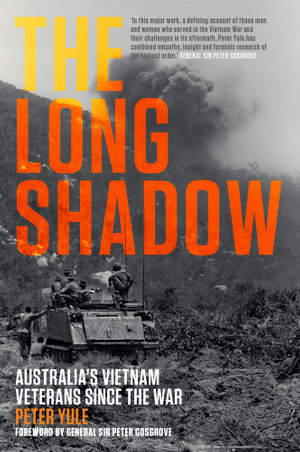
The Battle of Long Tan
Peter FitzSimons AM is a journalist and the author of Kokoda and Gallipoli, making him one of Australia’s bestselling nonfiction writers. In The Battle of Long Tan he retells Australia’s deadliest battle of the Vietnam war.
August 18, 1966 Major Harry Smith and 108 inexperienced teenage ANZAC soldiers with dwindling ammunition took on 2,500 highly skilled Vietnamese soldiers, and won.
The infamous battle, which is now also a Hollywood movie Danger Close: The Battle of Long Tan, took place on a rubber plantation named Long Tan and lasted three and a half hours, in abysmal conditions where intense rain turned to fields of pure mud.
The incident earned United States and South Vietnamese Presidential Unit citations for gallantry as well as countless individual awards for the soldiers involved.
In The Battle of Long Tan Mr Fitzsimmons honours the grit shown in this classic battle by not holding back on the horror of what was experienced that day. He gives a voice to individual men who fought that day, from the path they took in the years and months leading up to that fateful day, to the fall out after the enemy was overcome and the survivors could finally, miraculously, put their weapons down.
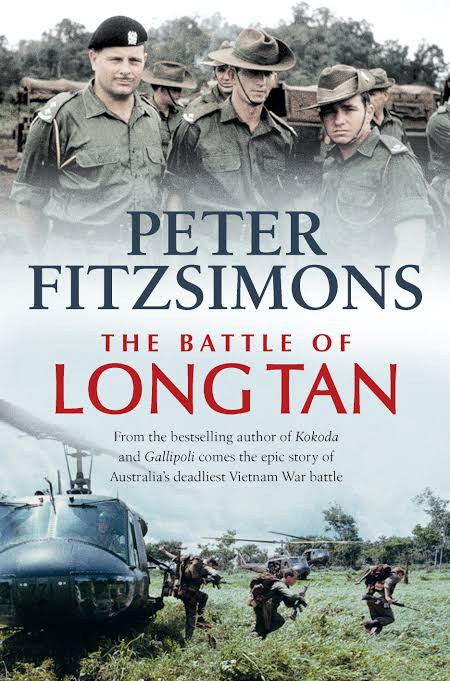
The Boat
Every book shelf should hold a copy of writer Nam Le’s 2008 collection of seven short stories, The Boat, anchored at beginning and end by the aftermath of the fall of Saigon.
The stories take place in countries across the world, from opening story Love and Honor and Pity and Pride and Compassion and Sacrifice, where the writer studies at the Iowa Writers’ Workshop, to the titular and final story The Boat, where 16-year-old Mai’s parents send her off on a boat, completely alone, after the Fall of Saigon.
The Boat goes beyond the war and asks questions of its aftermath, through the lens of author Nam Le’s political and cultural experiences of this world as a Vietnamese-Australian.
523 Australians, and more than three million Vietnamese, died in the Vietnam war. Nam Le’s writing references his family’s struggle, his parents’ history, and the duality of a new life in a new country; as experienced by people from all walks of life in every part of the world.
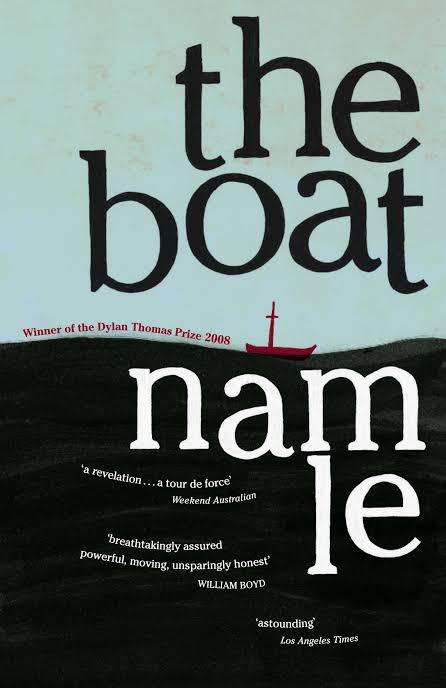
Enemy
In her debut novel Enemy Ruth Clare takes an entirely different perspective of The Vietnam War. She is the child of a veteran, and when she found herself raising the children of a veteran’s child she embarked on an exploration of her childhood that led to this book.
Her story is told from her younger self’s point of view, as she recounts the shift in her hime when her father returned from the war, bringing his demons with him. It continues the theme of elevating the voices of family members who continue to pay the price of war, years after the soldiers returned home.
“I decided the argument I was making was that if you didn’t care for veterans when they went to war, it was their families that would pay the price,” says the author, talking about a helpful writing technique in an interview with author Louisa Deasey.
Ms Clare wrote the memoir by meeting with veterans and listening to their accounts of life during and after the war. What she heard reshaped her relationship with her dad in light of his trauma and what she captures in Enemy is the universal cycle of children breaking patterns from childhoods in the care of traumatised parents and carers.
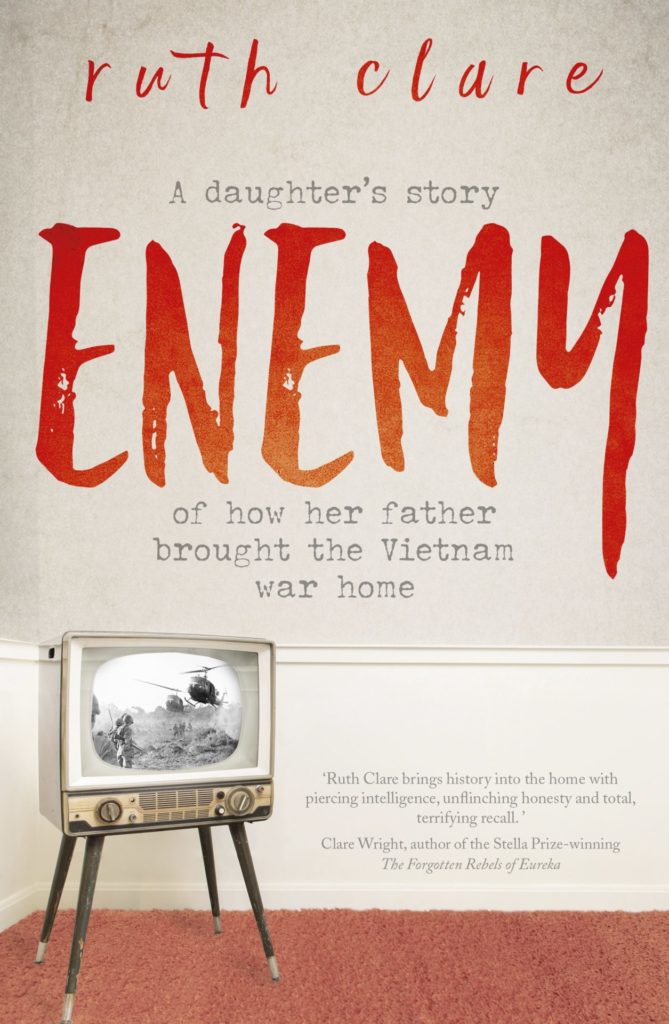
Dreaming the Enemy
David Metzenthen, whose father and grandfather served in the Australian Defence Forces, weaves two stories into one with a tale of two Vietnam veterans in Dreaming the Enemy.
Johnny returns home after the war and struggles to assimilate to civilian life. Relationships with his parents and girlfriend are strained under the pressure of the memories and trauma he now carries with him.
Haunting him is the ghost of Viet-Cong fighter Khan, whose own story unfolds through their otherworldly interactions as the story switches from past to present and back again.
Khan and his fellow soldiers Trung and Thang hiding out in the jungle, crawling through tunnels and fighting on the side of the enemy is juxtaposed with Johnny’s visits to the families of his friends who didn’t make it. These are some of the most heart wrenching scenes in the book, as Johnny grapples with his descent from who he used to be to who he is now, and all he has seen and lost along the way.
The Australian describes Mr Metzenthen’s work as a good read for “senior secondary students, especially boys… powerful, highly readable and with key characters close to their age. It touches on many issues: the aftermath of war, including how returned fighters were and are treated; the effects on mental and physical health and on families and relationships”.
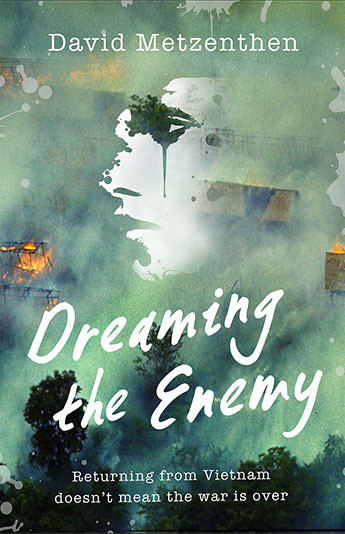
Courageous Women of the Vietnam War
Medics, journalists, survivors, and more are given a voice in Kathryn Atwood’s non-fiction account of the often untold stories of brave servicewomen.
The Courageous Women of the Vietnam War who risked their lives in the past, now get to inspire the young minds of a future they fought for. Kathryn’s realistic retelling of each woman’s individual battles spotlights a small army of unsung heroes who fought for their country in hospitals, on factory floors, and in empty, abandoned homes.
As the foreword reads, “The women whose stories are included in this book represent all sides of the Vietnam War: Northern and Southern Vietnamese; French, Americans, and Australians; military nurses, and a peace activist. Through their varied experiences, perhaps we can gain insight into the many facets of this complex and tragic conflict.”

Vietnam (My Australian Story)
In her book Vietnam Deborah Challinor transports the reader back to 1969 through the pages of 12 year old Davey Walker’s diary. When his brother is drafted to the Vietnam War in the birthday ballot, Davey is lifted from a life of surf, sun, Beatles songs, and imminent moon landings – and plunged into a sea of weaponry, war wounds, light infantry and napalm, through the letters they exchange.
Young readers get to relate through their own stories of Australian life, contrasted against what was happening around the world at that time.
Themes in the book include grief, fear, expressing emotions and male mental health. These are explored in the context of fighting for your country as a family tradition, and the confusion around the ethics of going to war. Historical notes at the end of the book are a great resource for kids and parents looking for factual context and further information.
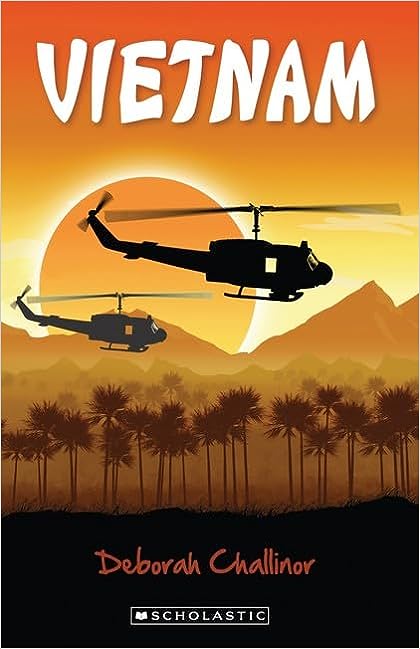
Vietnam War, Red Haze: Australia and New Zealand in Vietnam
Leon Davidson’s non-fiction account of the Vietnam War is written for teenagers. It gives a detailed breakdown of the challenges of fighting the Vietcong, whose local knowledge of the jungle made it so perilous for Australian and New Zealander soldiers to adapt and fight back.
Leon sets the scene with young men, also only teenagers, advancing through the jungle with media scrutiny on one shoulder, and backpacks filled with weapons and equipment on the other.
Australia’s development of new combat skills and survival techniques, is a point of interest for teenagers and a great hook for exploring war stories and their relevance in the world today.









